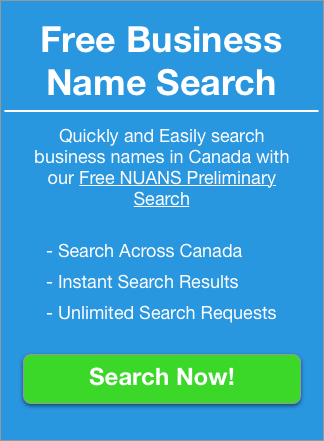7 Ways For Business Owners To Say “No”, Without Hurting Their Network

Have you ever heard the expression, “It’s not about what you know, but who you know?”
If you’re a business owner, you undoubtedly understand the importance of business connections.
As the saying indicates, the relationships you form contribute greatly to your success. After all, your employees, partners, and customers are the backbone of your business.
Securing and nurturing that network is critical to your company’s performance.
Yet it’s the value these relationships hold that makes it challenging to refuse a proposition you’re not interested in pursuing.
Today, we’re discussing tactful and professional ways to say “no”. We’ll tell you how to do this even with someone whose opinion and respect you hold in high regard.
1. Request Time To Check Your Agenda
Rather than responding with an abrupt answer you’ll regret later, simply ask for some time to consult your calendar.
Doing so will give you the cushion and space you need to say “no” later. This can come after you’ve double-checked your commitments or spoken to others in your circle who can advise you about the best decision.
This tactic also sends the message to the asker that you’re genuinely interested in the offer. It says that you aren’t simply brushing it off at the onset.
An immediate reply can infer that you’re not even interested in entertaining the idea. A quick “yes” can commit you to far more than you’re willing to take on.
Requesting a little time to respond is one of the best ways to say “no”. But, be respectful of the other party and don’t let too much time pass before offering up your answer.
2. Seek Ways To Say No With Facts
Chances are, your acquaintance took the time to plan and prepare his or her request before coming to you with it.
As such, brushing off the inquiry without offering a reason why can be insulting. It could also insinuate that you take offense to either the subject matter or the person asking about it.
Rather, before you say “no”, offer concrete data to back up your response. If your budget is too tight, or your teams are too overworked to take on the demand, don’t be afraid to say so.
These details can help send the message that your refusal isn’t to be taken personally — but is a matter of business.
It also opens the door for you to offer some encouragement for future proposals. A response such as “We’re a little slammed right now, but please check back with me in a few months” is an easier pill to swallow than a curt “no.”
3. Find (And Accentuate) The Positives
It might seem counterintuitive, but one of the most effective ways to say “no” is to focus on the ways you’re already saying “yes”.
If an acquaintance introduces an idea that you cannot or don’t want to accommodate, start by focusing on a related task you’re already doing. Stress the importance of your participation in that matter.
Say, for instance, a partner asks you to attend an out-of-town trade show that’s not entirely in your wheelhouse or area of interest. While it might be tempting to shut the idea down completely, try to consider the ways you’re already engaged with that partner. Then, offer up these details as evidence of your ongoing support.
An appropriate response might be “I’m committed this month to helping our sales staff, so I’ll need to be here. However, we look forward to working with your team this year. We can’t wait to see your new product lines.”
In this sense, your “no” is still present. Yet, it’s strategically positioned between too affirmative “yes” statements that offer confidence and reassurance moving forward.
4. State The Extent Of Your Support
While you might not be able to fully commit to the request at hand, consider if there is any way you can support it from a distance.
Doing so can help you avoid an outright “no” while also setting clear limits on what your acquaintance can and cannot expect from you. This allows you to set priorities and responsibilities. It does this while also putting a degree of distance between you and the full weight of the responsibility.
This works best for action-based tasks that you aren’t able to perform yourself.
In these cases, there might be the possibility that the requestor could perform the task by himself or herself if you offered a bit of help.
For instance, if someone wants you to drive them to the airport for business-related travel, you might state that they’re welcome to use the company car, and you can give them the keys. You don’t have to come out and verbally say, “But I cannot take you there you myself.”
5. Refer The Request To Someone Else
Sometimes, saying “yes” to a request you know you cannot support doesn’t just create conflict and frustration. It can actually do a disservice to both you and your acquaintance.
Regardless of your relationship with the person asking, if you agree to participate in a task that you’re not qualified to do, you could end up damaging some pretty valuable reputations.
You could also experience emotional burnout if you respond affirmatively to every opportunity that comes your way. Often, there is more than one person in your company who may be willing and able to take on the responsibility instead.
In these cases, one of the most appropriate ways to say “no” is to refer the asker to someone else who might be more qualified and available to take on the role.
When you do this, you not only keep the idea alive, but you also have the opportunity to engage with other peers and colleagues to build a spirit of teamwork and boost morale.
When given this chance, take a look around your office to identify those with the talents best matched to the offer.
Is there an intern or associate who would love the opportunity to prove himself or herself? Is there a teammate uniquely positioned to take on the challenge?
If so, shifting the request to these coworkers is one of your best ways to say “no”. This can lead to a better fit than if you would have said “yes” out of sheer obligation.
6. Focus On The Task, Not The Person
You might have heard that people fear public speaking more than death.
Yet, psychologists confirm that it’s not the physical act of speaking that leads to our anxiety — it’s the fear of public rejection.
As people, almost all of us are wired with a predisposition to embrace acceptance and fear rejection. As such, when our ideas and offers are met with an immediate denial, it can be difficult to not take the rejection personally.
Even the most well-delivered refusal can sting just a little, especially if we’re invested and excited about the opportunity.
Keeping that in mind, one of the most gentle yet effective ways to say “no” is to make sure you cushion your response by making sure the person knows you’re saying “no” to the task itself — you’re not turning them down personally.
Even if you can’t accommodate the request, try to find ways to compliment or build up the person asking about it.
For instance, let’s say you’re asked to participate in a speaking gig but don’t have the bandwidth to leave the office.
Try to mention how much the offer means to you, and how honored you are that you were asked to attend. This way, you let the asker know that your unavailability isn’t to be taken personally. You’ll also show that you recognize the proposal as a valid and worthy request.
7. Keep It Brief And Stick To It
When you’re looking for ways to say “no”, it’s helpful to add details as we’ve explained above.
But remember, it doesn’t help if your negative reply is long-winded either.
Not only could this signal a defensive response, it also adds a more confrontational aspect to the conversation.
Offer a clear, concise reply that leaves no question as to where you stand. When you do so, you send a message about your commitments, priorities, and schedule that anyone in your network should understand and respect.
Then, once you’ve made your decision clear, it’s equally important to stick to it. Going back and forth between “yes”, “no”, and “maybe” can draw out the process and send the message that your decision-making skills could use a little sharpening.
A politely delivered, adequately explained “no” is more valuable in the long-term than a quiet and hesitant “yes”.

